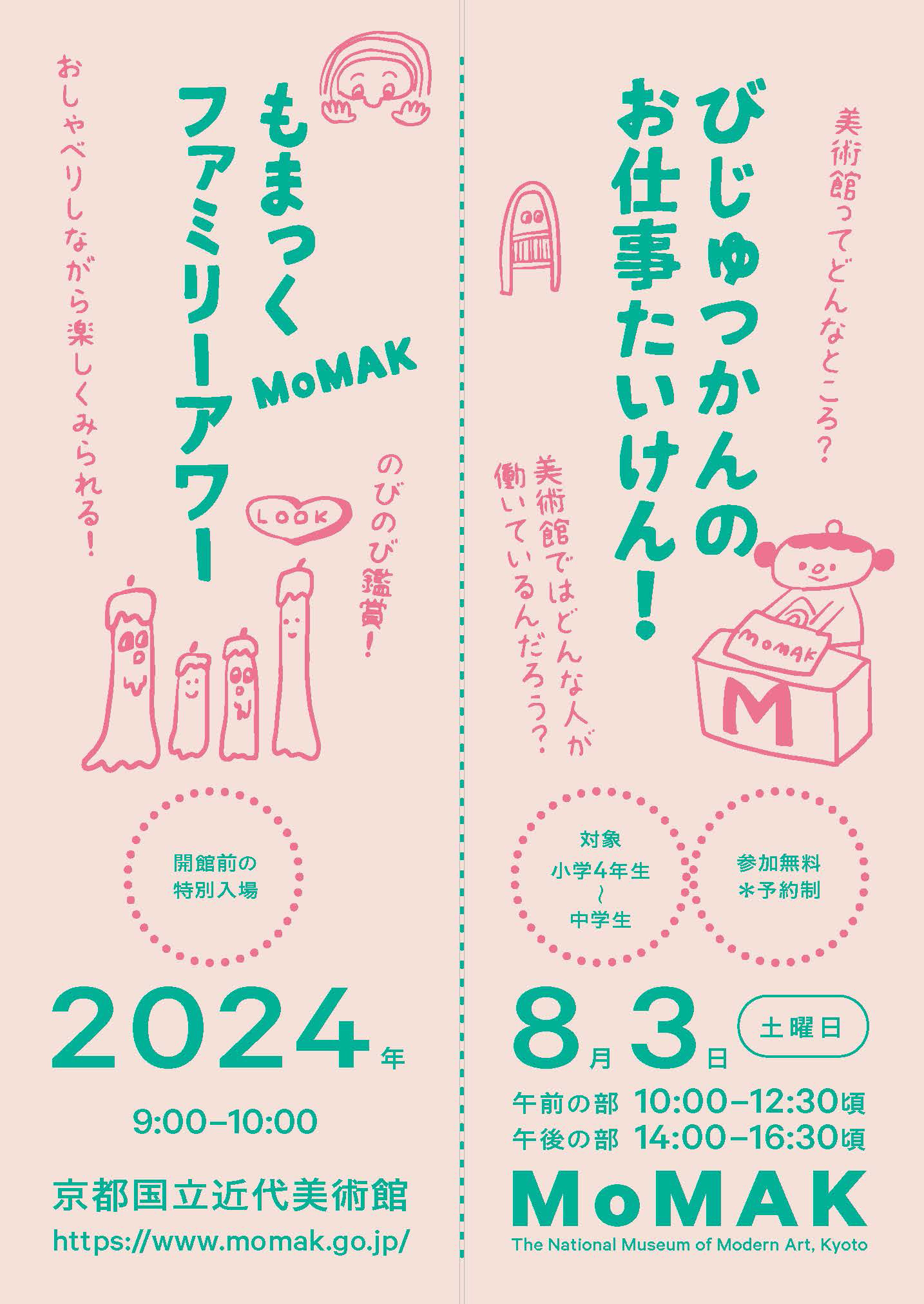Reports
April 11, 2025
2024 Event Report: Work Experience at the Art Museum! & MoMAK Family Hour
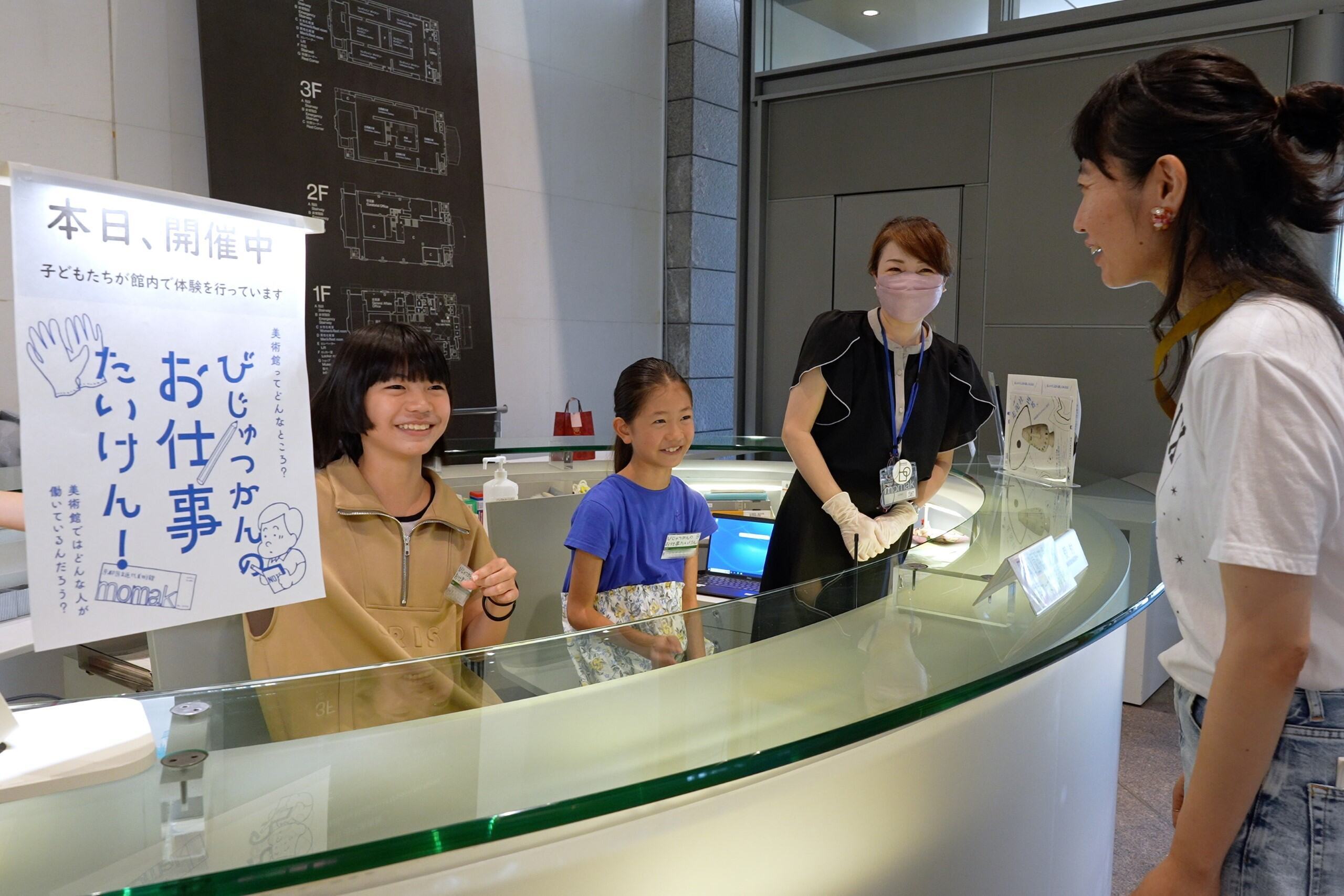 Ended
Ended 
Work Experience at the Art Museum!
The National Museum of Modern Art, Kyoto
Dates August 3, 2024
- Workshop
Index
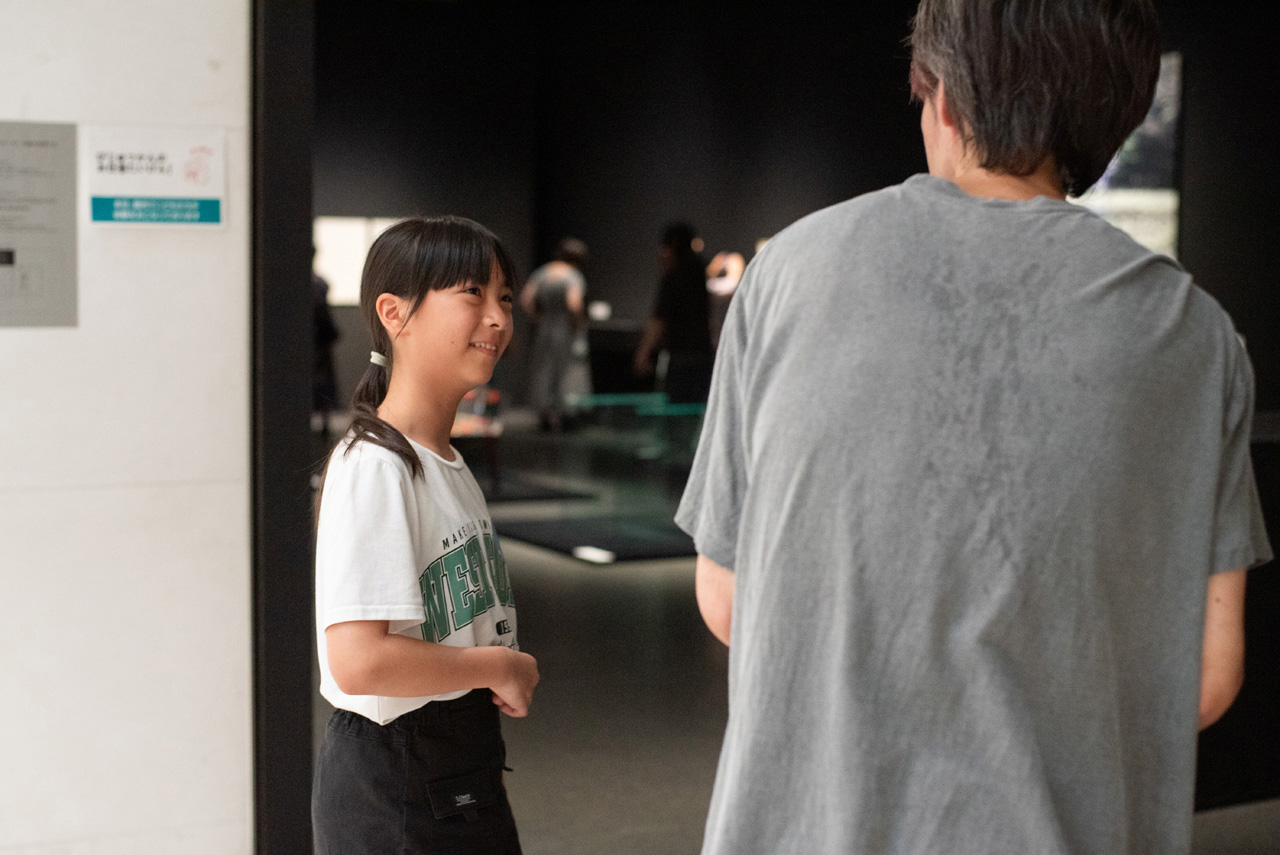
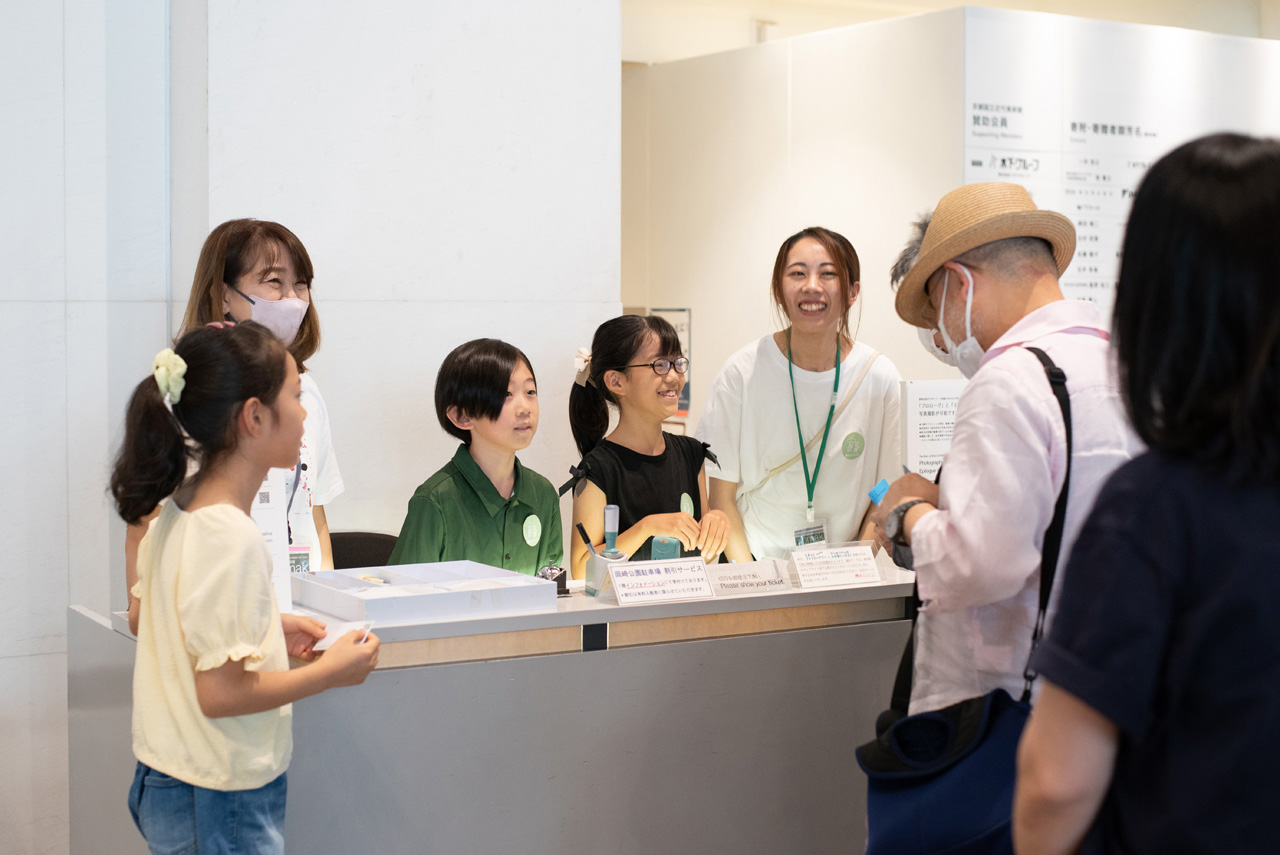
The National Museum of Modern Art, Kyoto, which celebrated its 60th anniversary in 2023, hosted “Work Experience at the Art Museum!” as part of its anniversary celebrations. This program allowed children to explore behind the scenes at the museum while trying out various jobs, such as curator and ticket counter staff. Following the first event’s success, a second edition was held on Saturday, August 3, 2024, with 42 students from fourth-grade elementary to third-year junior high school participating in morning and afternoon sessions.
On the same day, the museum offered “MoMAK Family Hour,” a special admission time separate from regular hours, where families with children, including preschoolers, could enjoy the exhibitions in a relaxed atmosphere. During the special exhibition “The Work of Shiro Kuramata: A Microcosmos of Memory,” children’s honest expressions of amazement at the unusually shaped chairs created a pleasant atmosphere throughout the venue.
Welcome to Behind the Scenes at the Museum
The National Museum of Modern Art, Kyoto, is in Okazaki area, next to Heian Jingu Shrine. The area has many cultural facilities, including other museums and a zoo. The museum houses artworks and crafts from Western Japan (especially Kyoto), along with domestic and international collections. These are presented through Collection Exhibitions and Special Exhibitions.
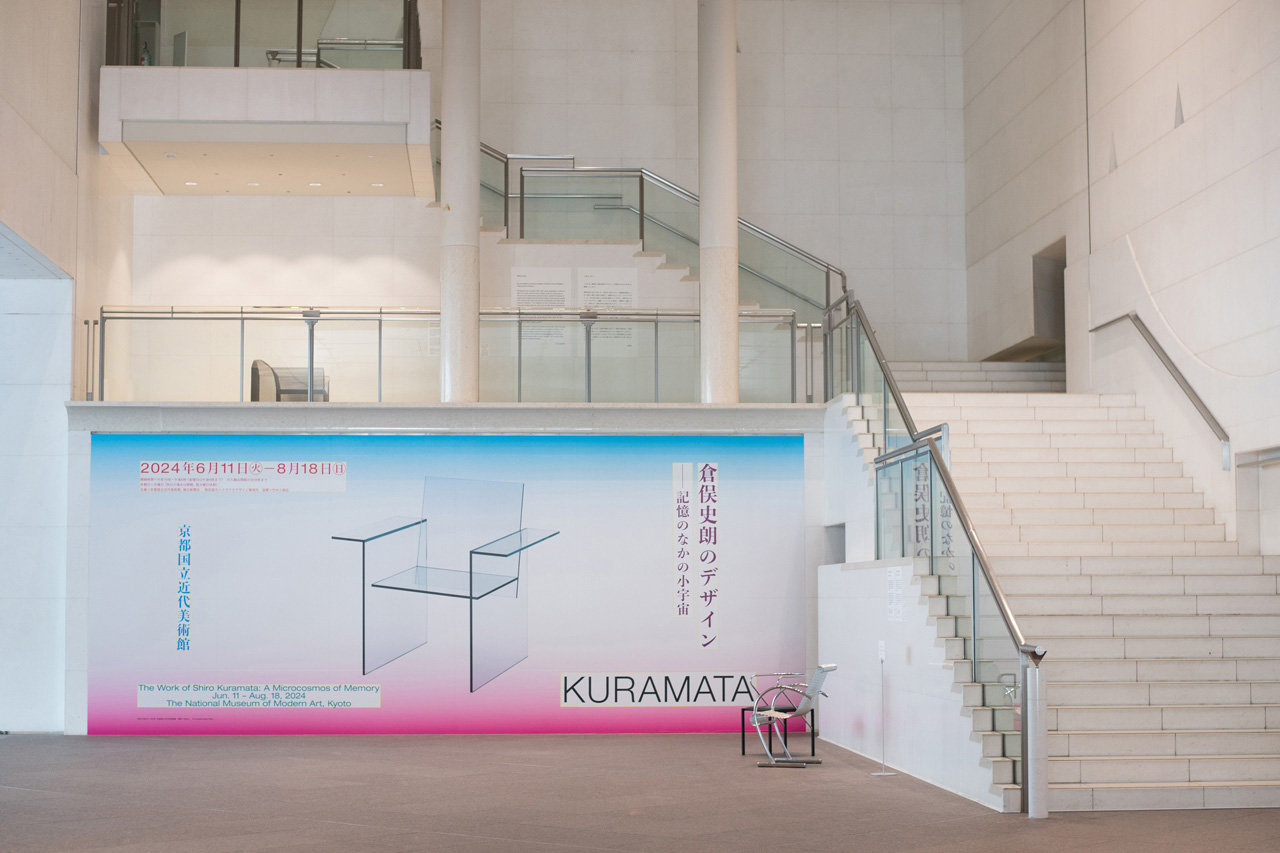
The children participating in “Work Experience at the Art Museum!” first gathered in the ground-floor auditorium to learn about the museum’s history and building.
When asked, “Who’s visiting this museum for the first time?” most of the children, especially elementary school students, raised their hands.
After viewing slides explaining the museum’s activities, roles, and staff duties, it was time for the exciting Behind-the-Scenes Peek Tour.
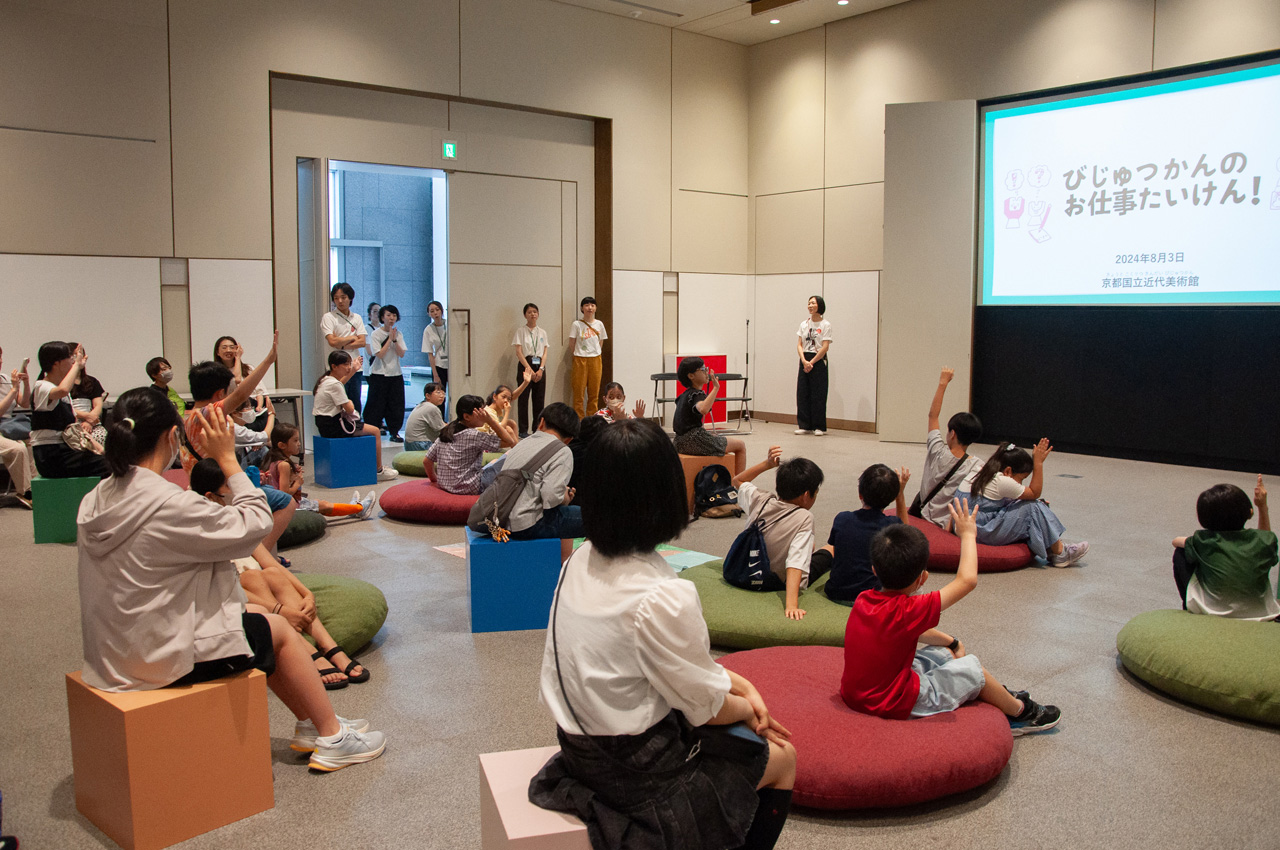
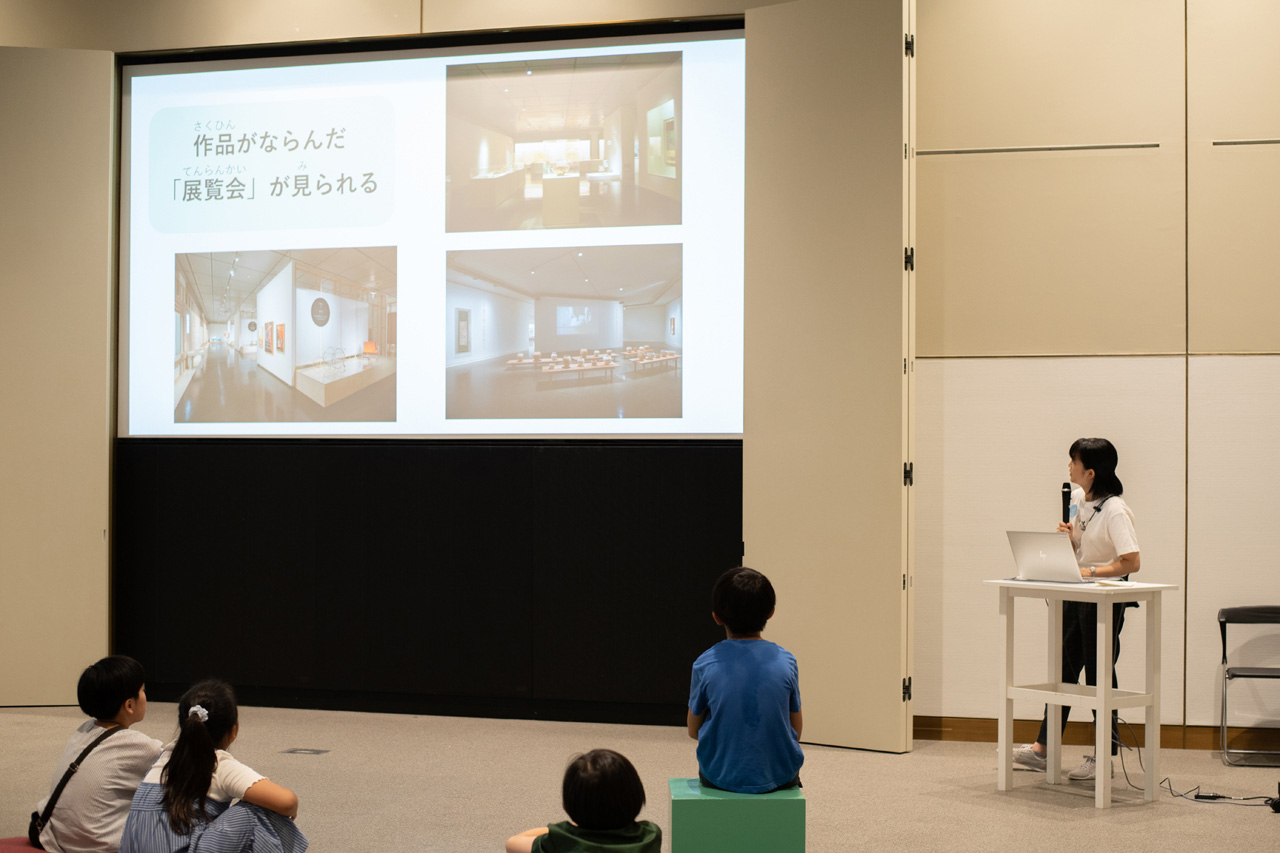
Their guide was a museum curator involved in the museum’s curatorial work. The first stop was the curators’ office—their workplace.
The office has rows of desks and shelves, with large movable bookshelves along the walls and stacks of books on every desk.
Curators need many books and reference materials to plan exhibitions and research artworks and artists.
Next was the director’s office. Director Fukunaga explained, “Having artwork close at hand makes work more enjoyable.” The office displayed sculptures and ceramic works from the director’s personal collection.
After sitting on the comfortable sofas in the adjacent reception room, the group headed to the loading dock.
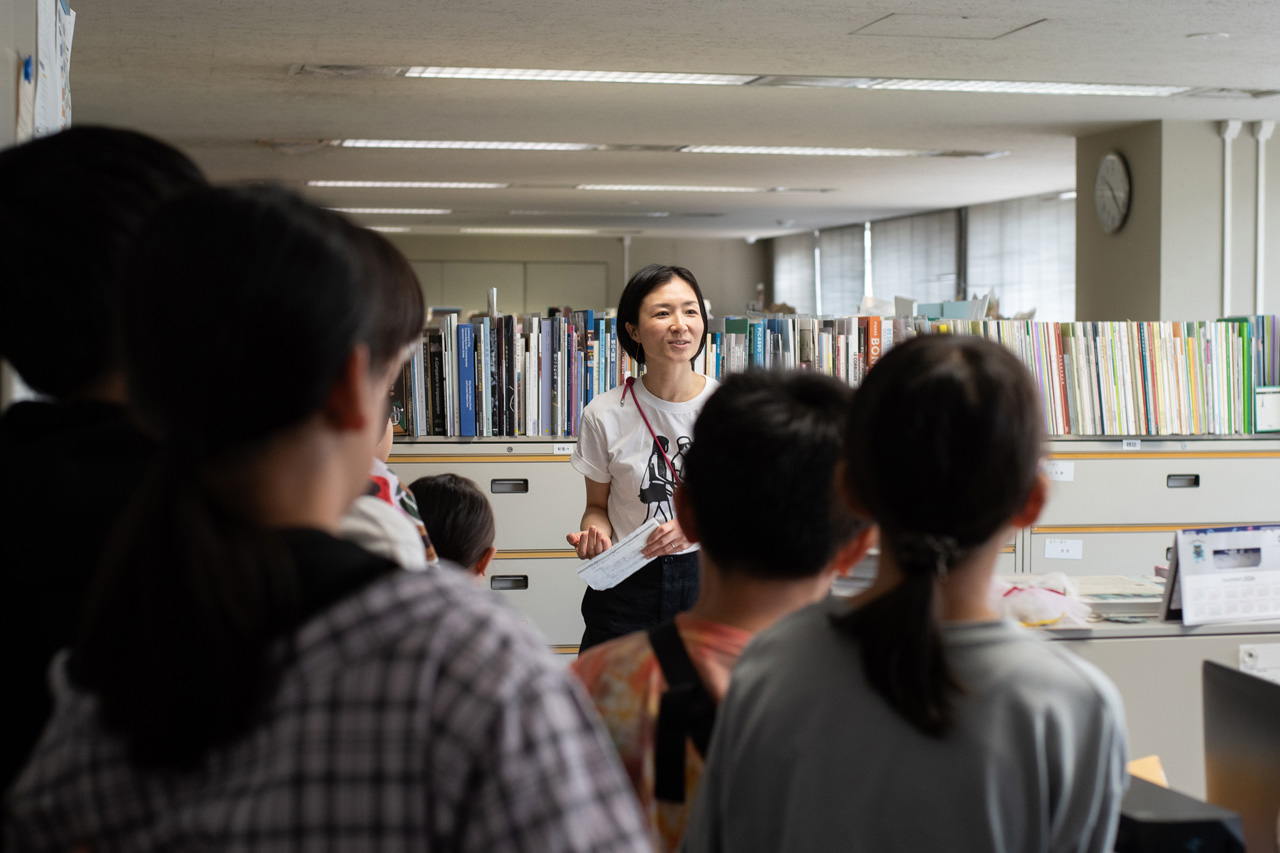
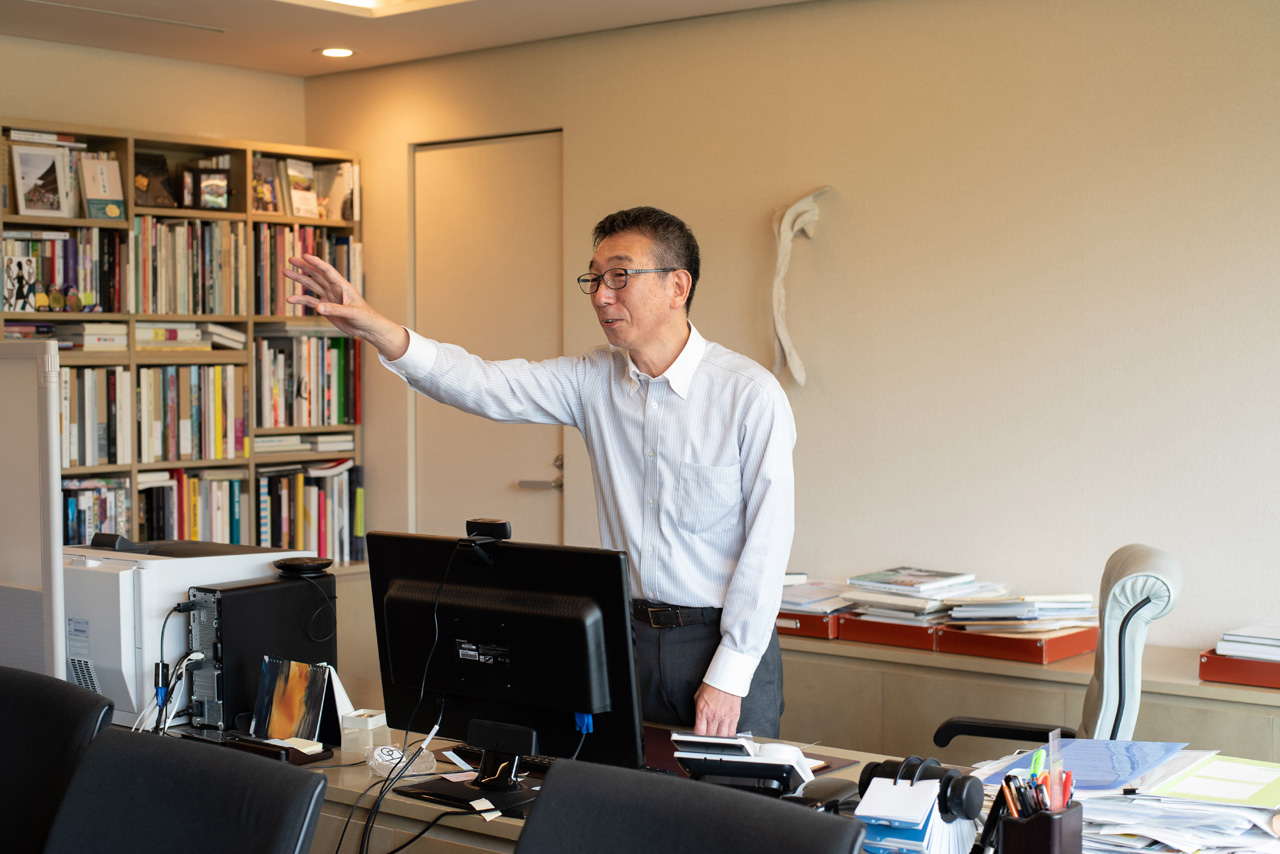
The loading dock is where trucks carrying artwork arrive. Since the museum receives artwork for exhibitions from various locations in Japan and abroad, it’s equipped with special facilities for safely handling these pieces.
The children got to try out the artwork lift and ride in the large, slow-moving elevator. When the machinery started moving, they exclaimed, “Wow!” and “It’s so big!”
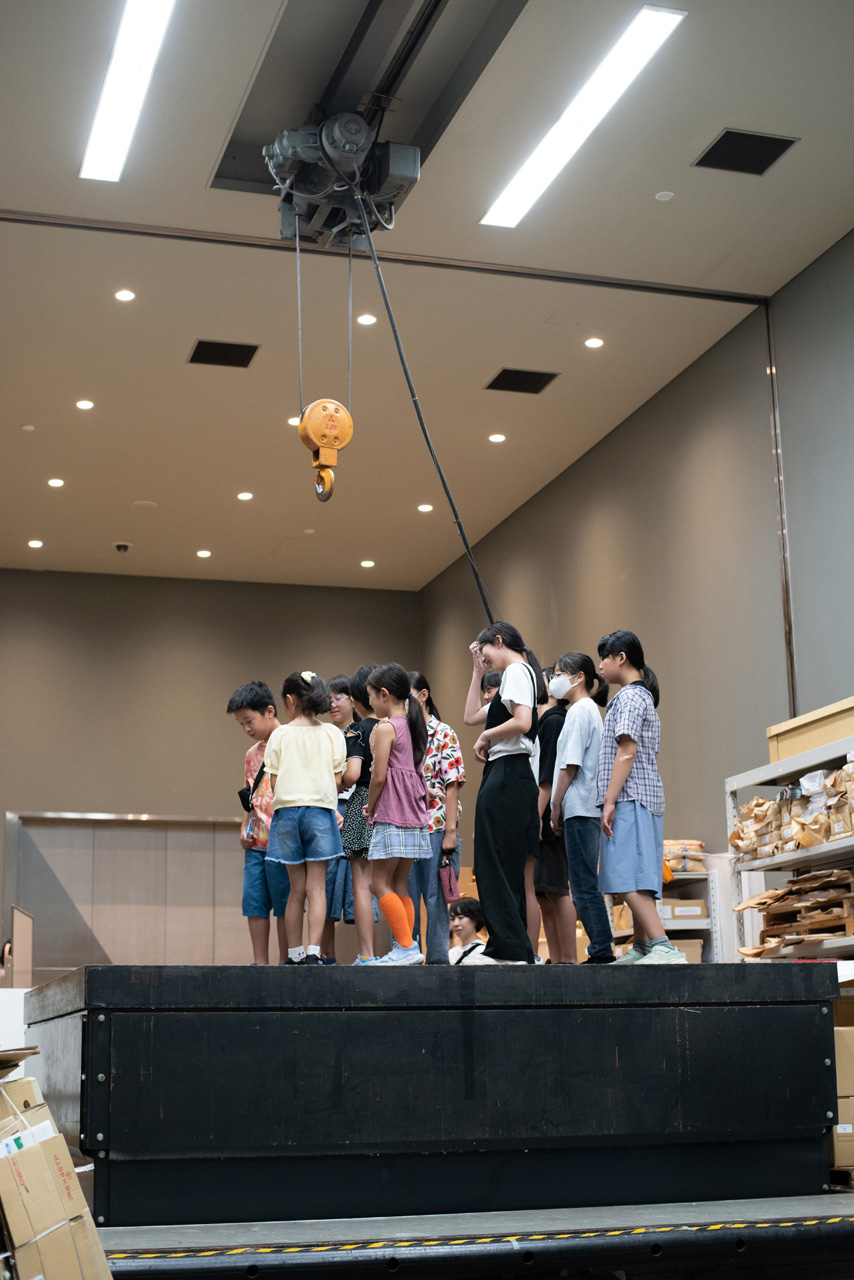
Many Jobs, Various People
The second half of the tour focused on experiencing various jobs that keep the museum running. First up was the gallery attendant’s job. When asked, “What do you think gallery attendants do?” the children quickly responded, “Protect the artworks!”
While gallery attendants might seem to be merely watching over the exhibition rooms, they actually protect much more than the artwork.
Using the “Rules for Exhibition Rooms” posted in the lobby as a hint, everyone thought about this together. Why are certain writing tools not allowed in the exhibition rooms? Why can’t you bring in food? What would happen if someone broke these rules?
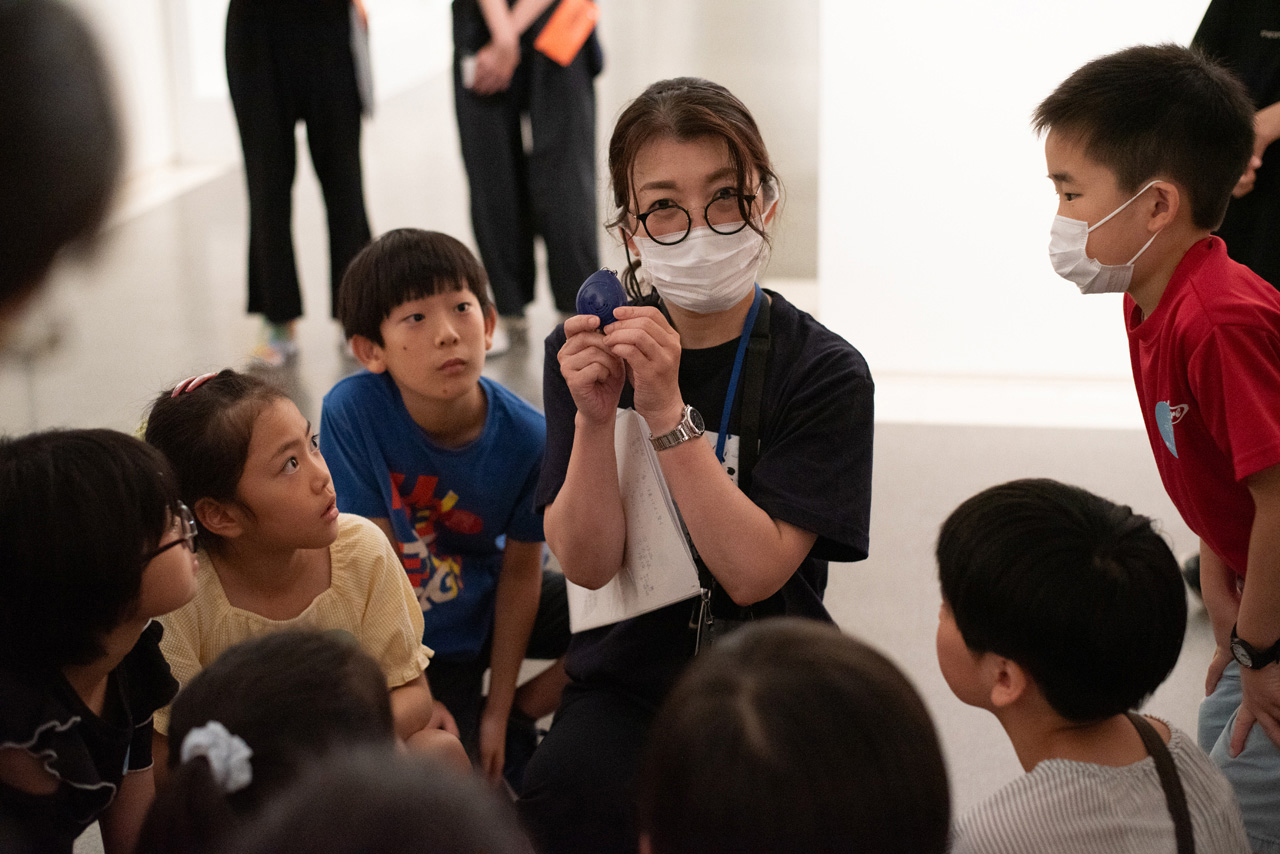
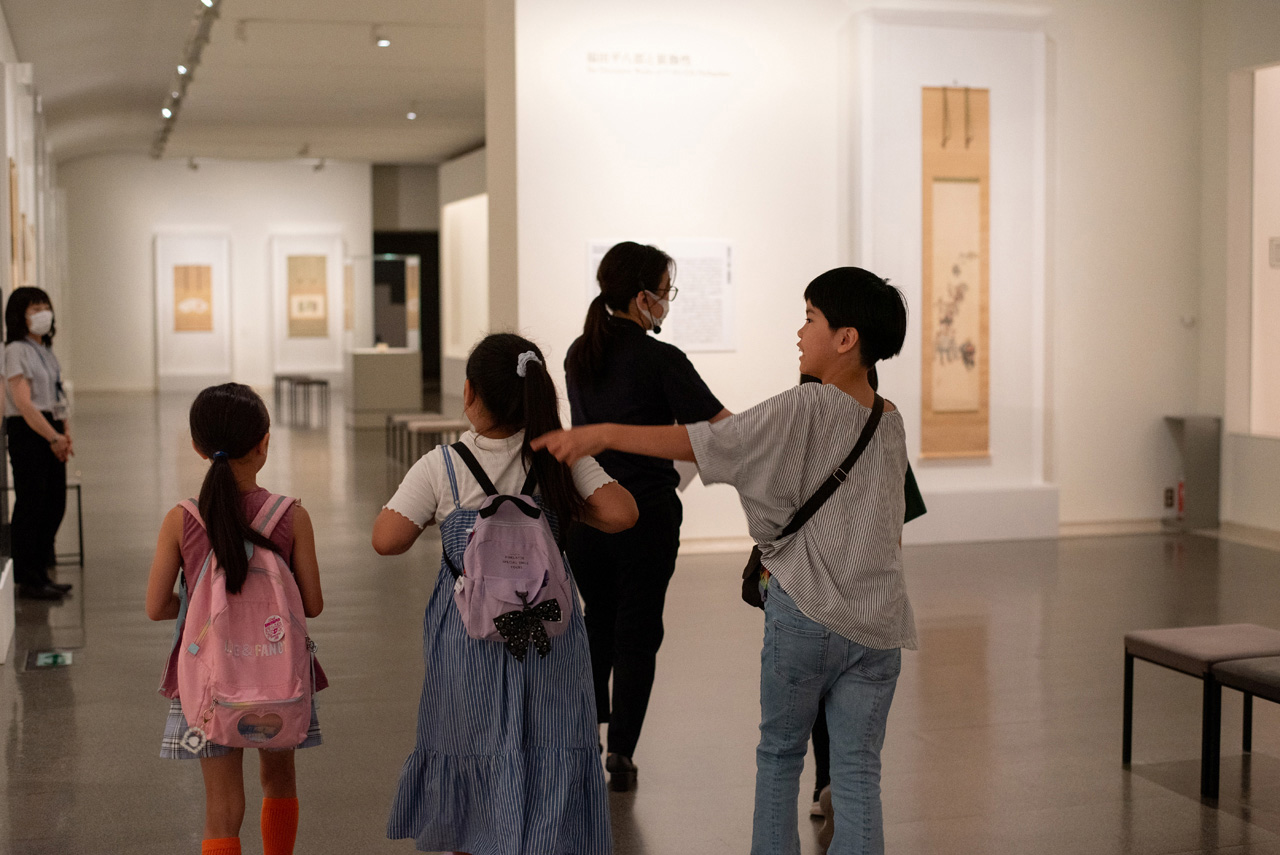
Moving into the exhibition rooms, they observed the boundaries that prevent people from touching artworks and learned about the set of tools gallery attendants use.
By looking at things from different perspective, the children seemed to understand the gallery attendants’ role in “protecting an environment where everyone can enjoy art safely and comfortably.”
Next was the central control room, where various facilities are monitored, especially the crucial temperature and humidity levels, which are so important for an art museum. Large monitors help staff check whether all systems are working correctly.
Quite different from the quiet museum atmosphere visitors usually experience, the machine room was full of noisy working equipment. While examining the normally off-limits complex structures inside power panels and transformers, the children listened to explanations from a facility staff member.
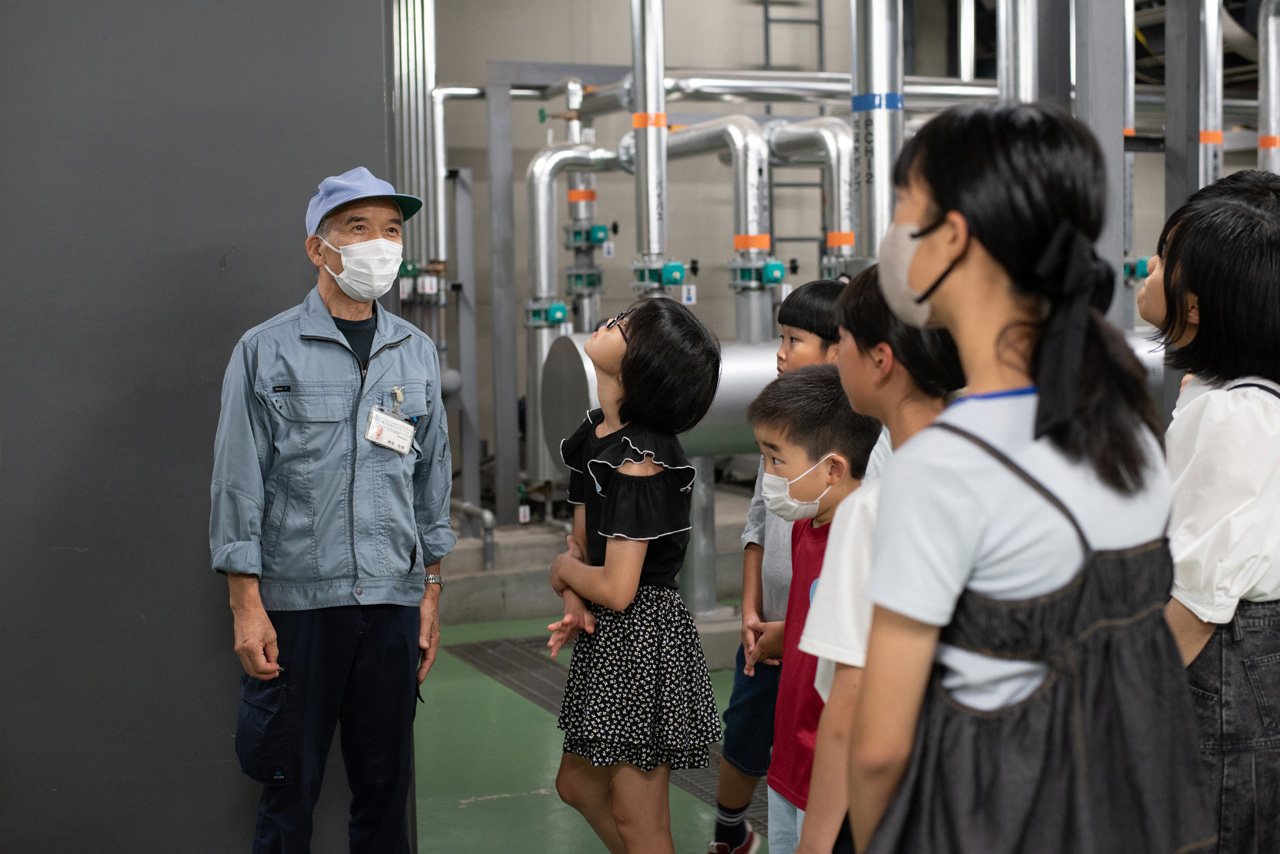
During the program, the children were especially enthusiastic about customer service jobs, such as working at the ticket counter and information desk, where they got to interact directly with visitors.
They carefully tore tickets along the perforated lines and explained questionnaires to visitors. Regular museum visitors who happened to be there watched warmly, encouraging the children with comments like “Are you here studying? Keep up the good work!”
Though the children were initially a bit nervous about communicating with unfamiliar adult visitors, their faces showed relief when they successfully got their messages across.
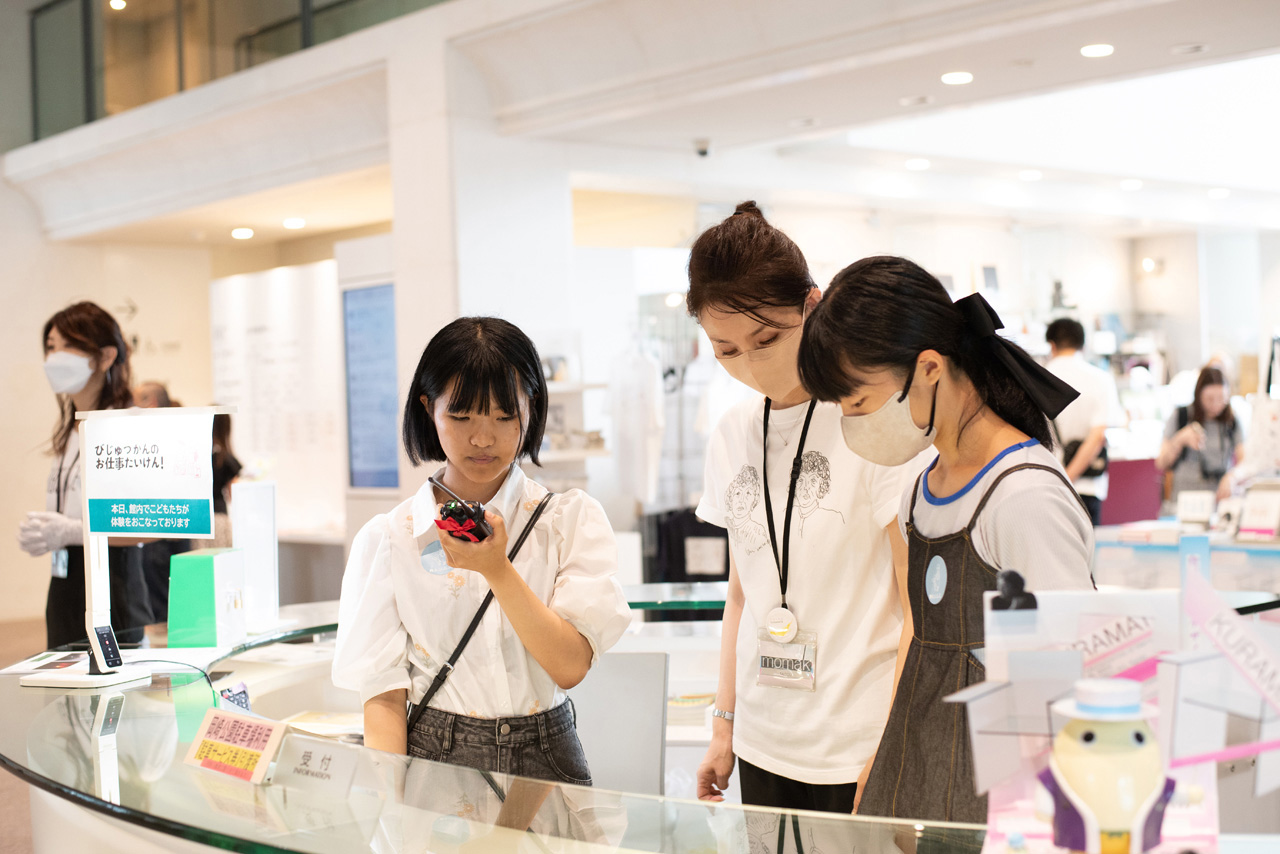
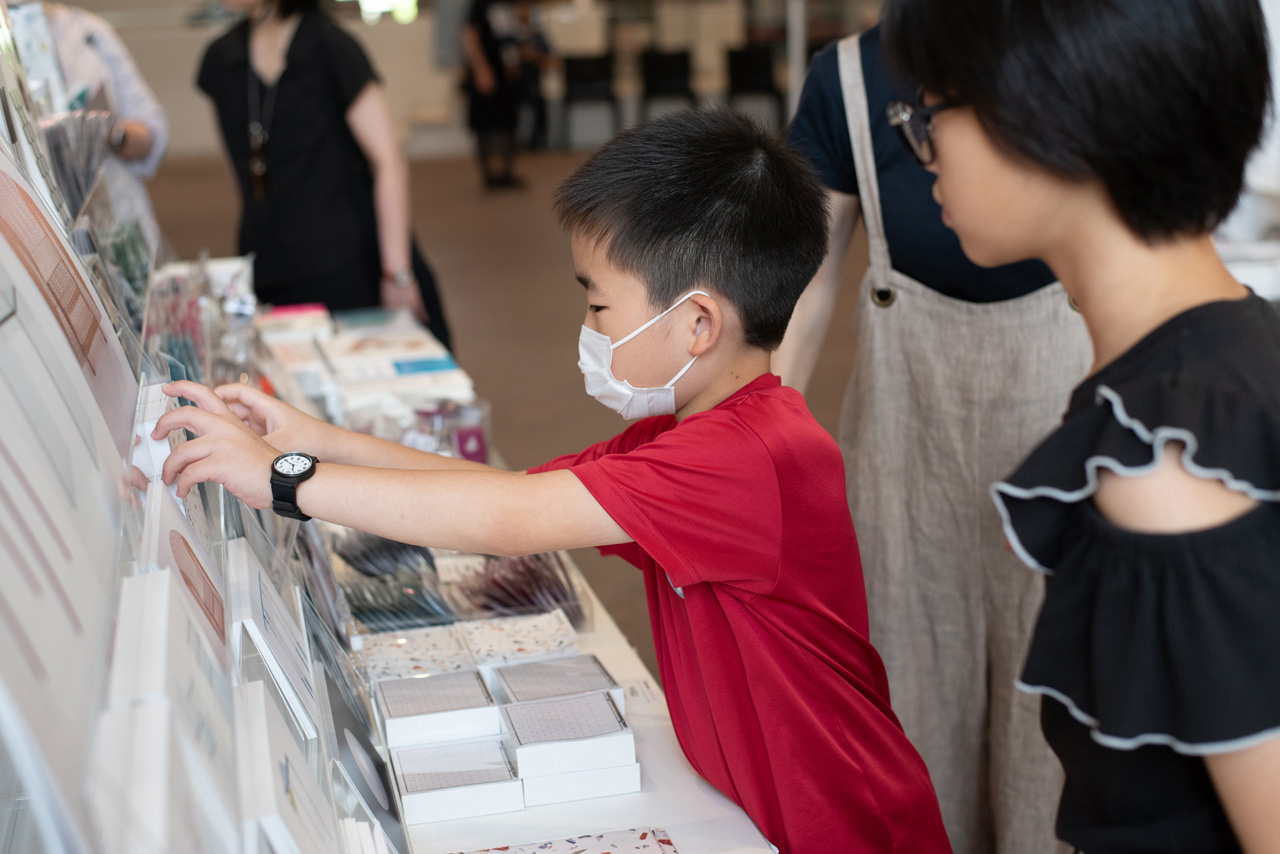
At the museum shop, they learned about shelf-stocking items such as postcards and display techniques. When scanning product barcodes, the children took turns and worked together cooperatively.
Creating Your Own Exhibition
The final challenge was trying out a curator’s job—creating an exhibition using the museum’s collection.
The children were given 36 artwork cards featuring various genres: Japanese-style paintings, oil paintings, sculptures, contemporary art, and product designs. Each child had to choose three cards that fit their own theme to create their personal exhibition.
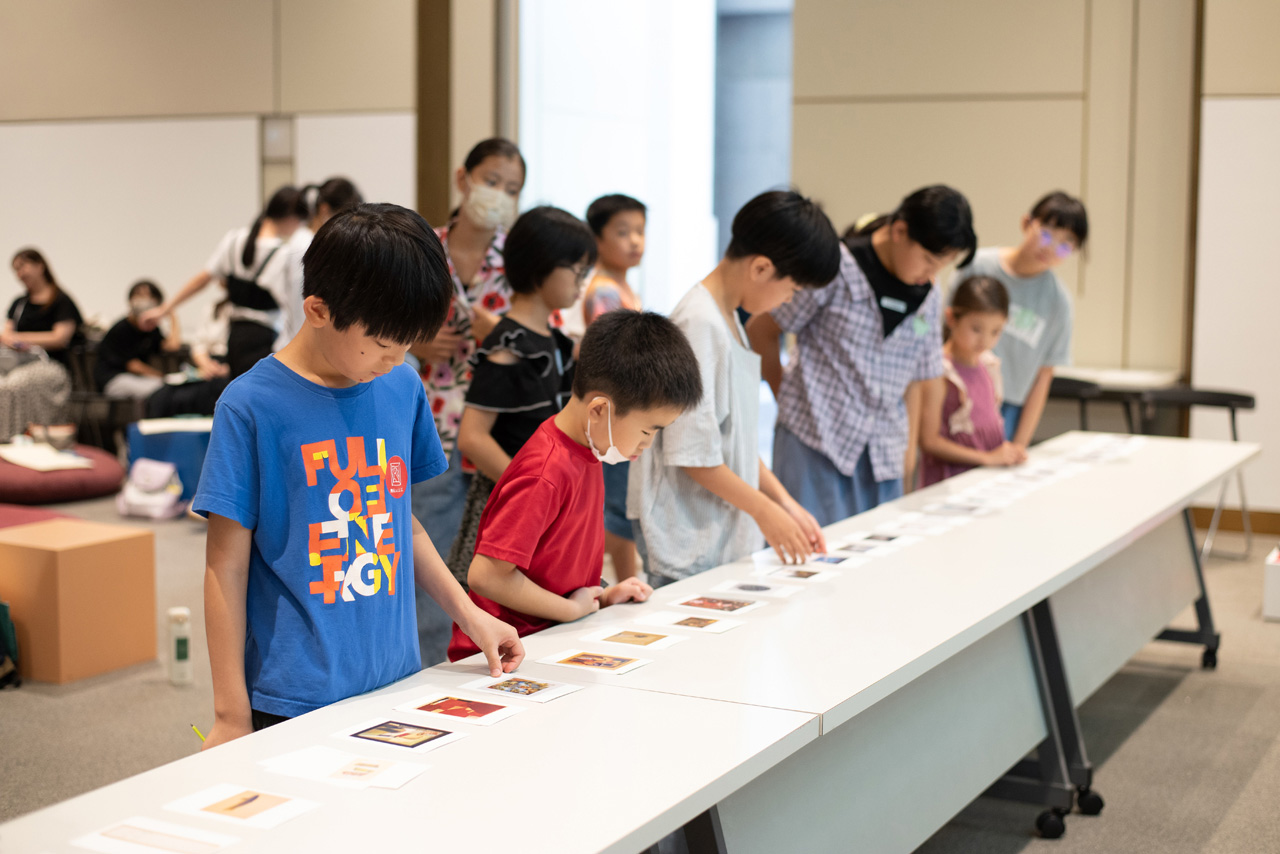
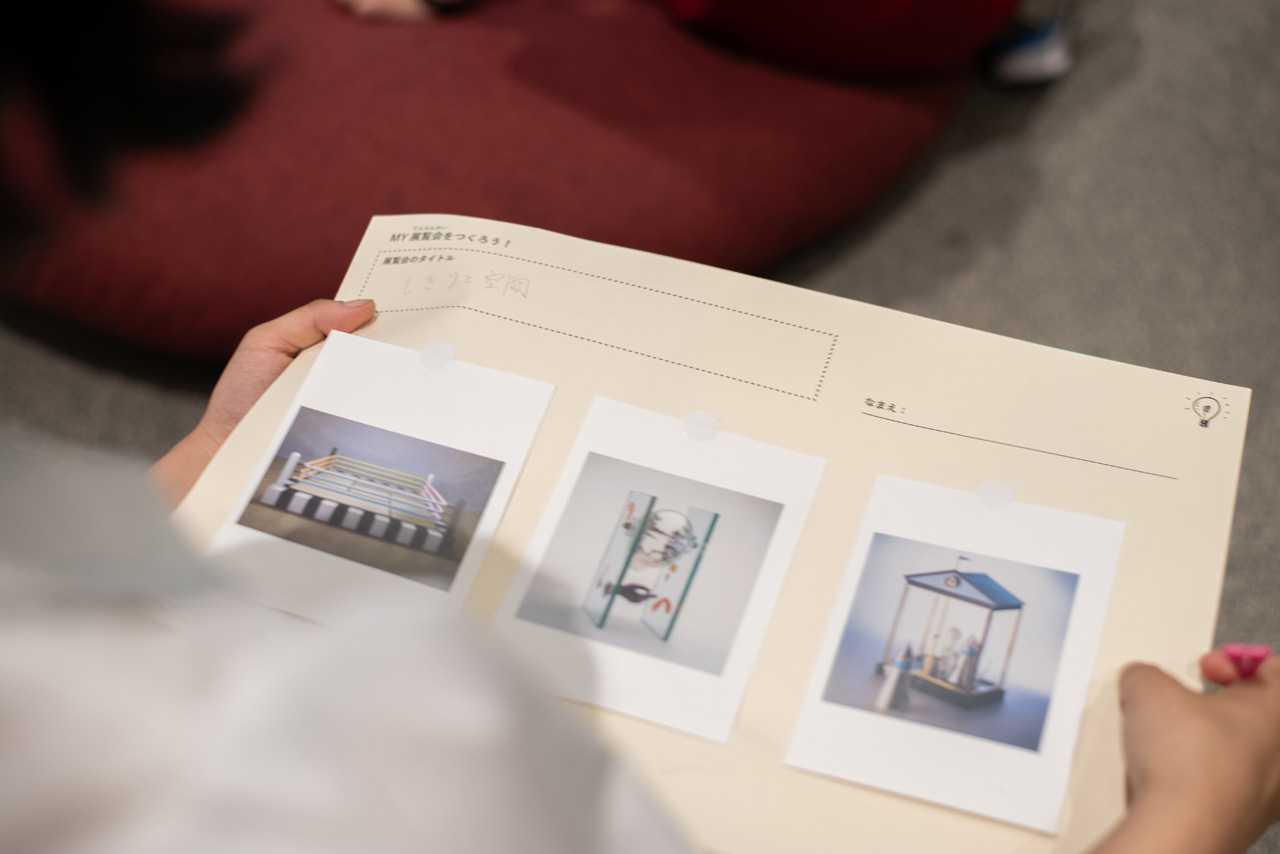
Their approaches were wonderfully diverse. Some children grouped similar types of works, such as plates and vases, while others found connections through shapes and colors. Some were inspired by the people, animals, or plants depicted in the artwork or by the feelings the works evoked.
It was fascinating to see how they interpreted the artworks through their unique sensibilities—like one child who imagined the unseen facial expression of a woman shown from behind in a Japanese-style painting.
Graduate students doing internships at The National Museum of Modern Art, Kyoto, supported the children throughout the event, helping those who were unsure about artwork selection and brainstorming exhibition titles together.
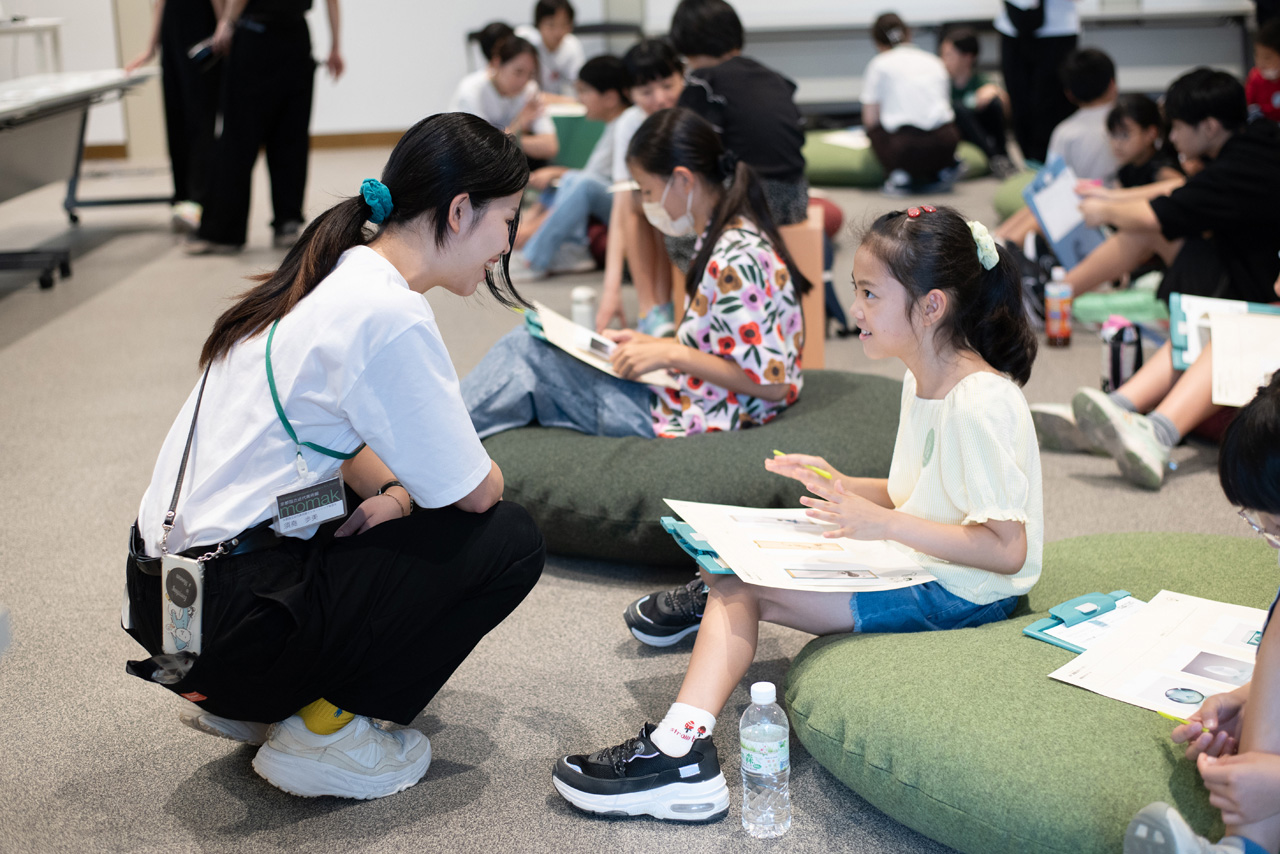
On the day of the event, there was also a collection exhibition on the fourth floor. The interns had also created special cards to help children connect with the artwork in a fun way.
There were six different cards (for six artworks). Written in child-friendly language, these cards highlighted interesting features of each artwork and included questions to encourage careful observation. Instead of placing them next to the artwork, the cards were gathered at the exhibition room entrance. Visitors started their experience by searching for artworks using the images on the cards.
The moment of “I found it!” turned the experience into something like a treasure hunt for the children.
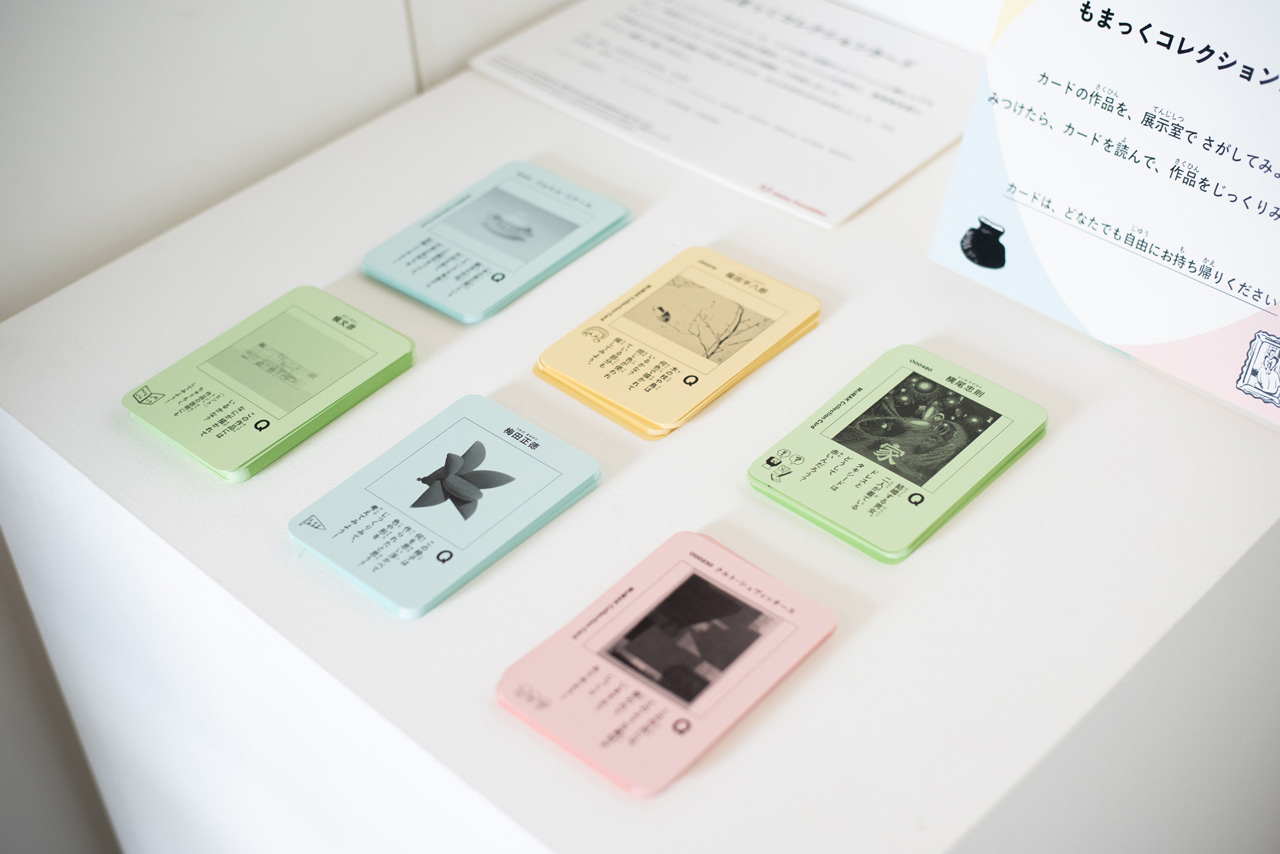
Creating Happy Memories at the Museum
Many people might hesitate to visit museums, worried about their children making loud noises in the galleries.
“Museums are actually places where you can talk—as long as you’re mindful of your volume. Still, we often hear from people who are reluctant to bring children, worried they might disturb others. To help lower this barrier and create a comfortable environment for both adults and children, we’ve established special viewing hours for families,” explains Ms. Matsuyama, an educator at The National Museum of Modern Art, Kyoto, who planned these children’s events.
For several years, the museum has held “MoMAK Family Hour” during popular special exhibitions, setting specific dates and times when young children and families can enjoy exhibitions more freely and easily.
This time, they set aside one hour before the regular opening time as Family Hour, when families can enjoy the exhibitions while chatting more freely. Adults accompanying children up to junior high school age can enter at a discounted rate.
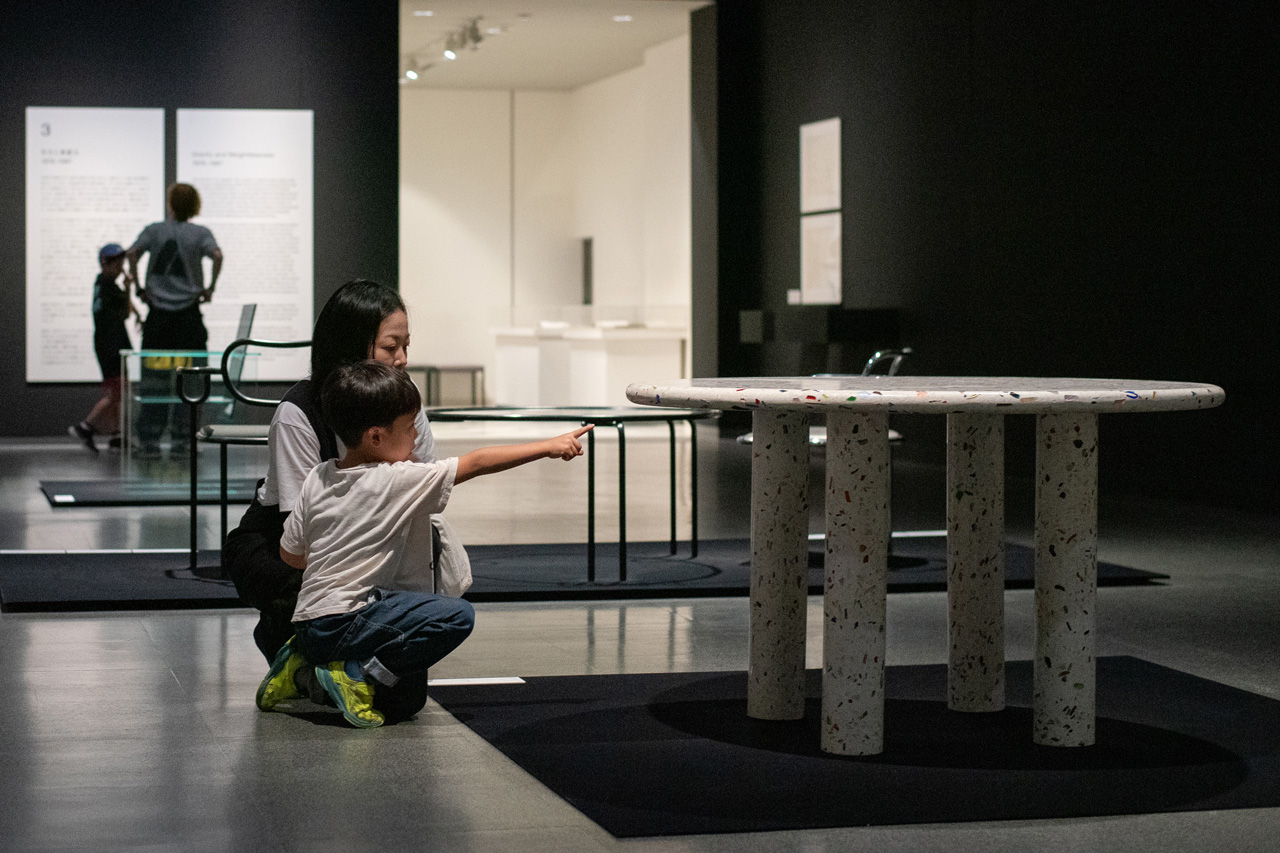
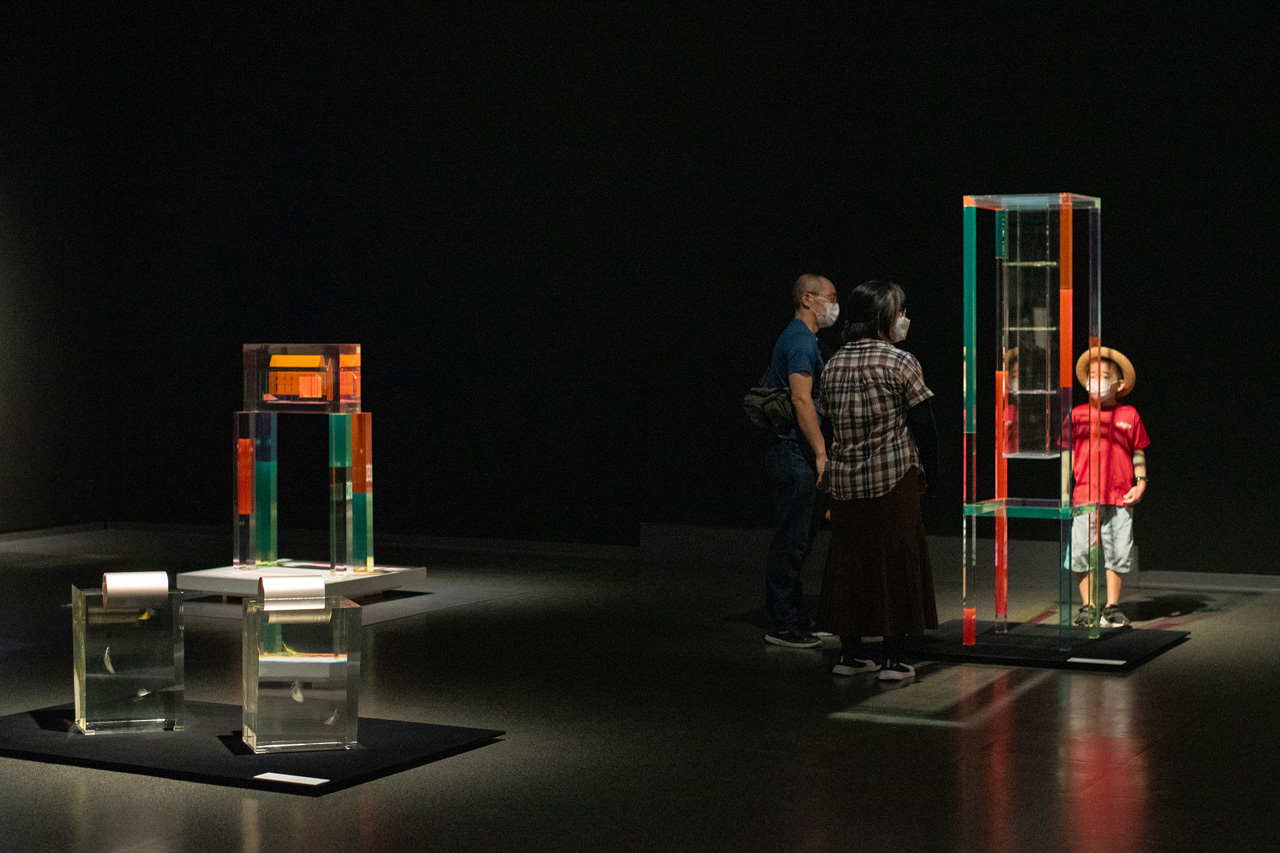
On Family Hour day, as soon as the museum opened at 9 AM—an hour earlier than usual—families who had been waiting outside started coming in.
The special exhibition “The Work of Shiro Kuramata: A Microcosmos of Memory” displayed rows of chairs and other furniture made from various materials, including acrylic.
“Wow! There are so many!” “Look, a transparent chair!”
Children’s honest expressions of amazement echoed through the venue. Many of the furniture pieces—tables and chairs—were displayed at heights easily visible to children. Families walked around the artworks, sometimes tilting their heads to view them from different angles.
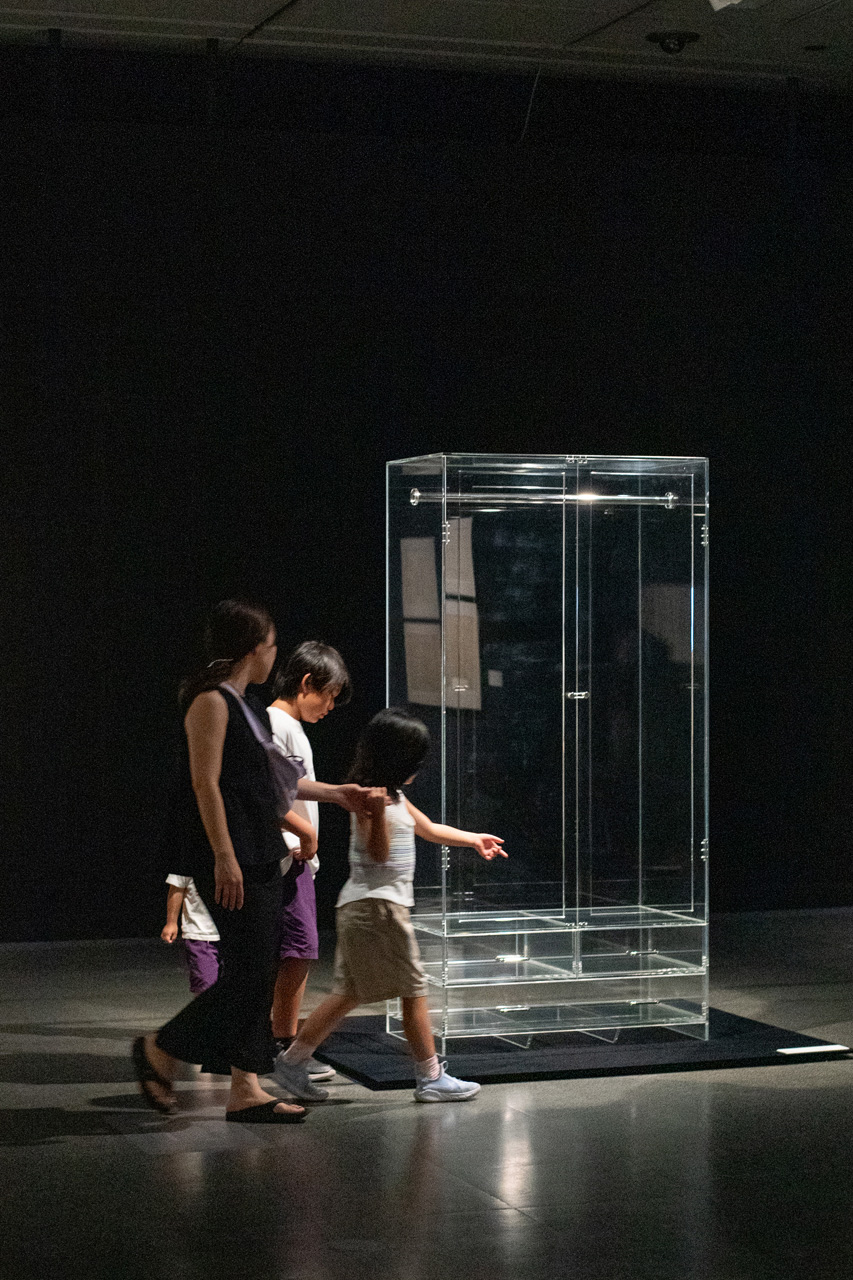
Some children playfully pretended to push cart-shaped pieces, while others gathered around tables with their families. Most visitors were preschoolers and lower elementary school students, and perhaps having many children of similar ages helped everyone feel more relaxed and enjoy themselves.
If children come to think of museums as one of their “favorite places,” this will create opportunities for families and everyone to enjoy art together well into the future.
Date of interview: August 3, 2024
Editing: Yukako Takahashi
Photo: haruharehinata
